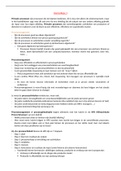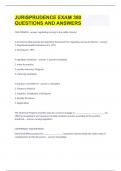Summary
Samenvatting Small Places, Large Issues - Introduction to Cultural and Social Anthropology
- Course
- Institution
- Book
This comprehensive summary explores the exciting world of anthropology, with an emphasis on cultural and social aspects. The abstract covers a wide range of themes, theories, and concepts, including cultural anthropology, the history of anthropology, psychological anthropology, gender studies, and ...
[Show more]







